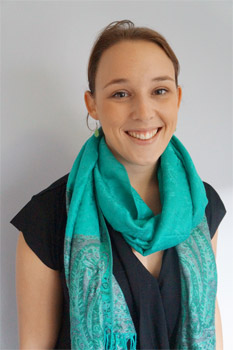Claire Richardson Vitamin D Interview

Claire Richardson Vitamin D Interview
B.Sci (Clin.Sci) M.H.S (Osteo)
Claire loves consulting with a wide variety of patients, including children, tradespeople, desk workers, pregnant women and older people. Claire has a particular interest in assisting with headaches and TMJ dysfunction (Jaw pain).
Claire firmly believes in the importance of patient understanding regarding their condition. Claire aims to empower those who consult with her to take control of their condition by understanding what it is, and why it's there. Claire utilizes a wide variety of treatment interventions to get the best results for her patients.
Claire has undertaken further study in Dry Needling (Manual Medicine Australia), Management of Tendon injuries (Complete Sports Care), Biomechanical Assessment of Athletes (New York Sports Medicine) and Functional Movement (The Functional Movement Group).
Question: What types of aches and pains are commonly associated with vitamin D deficiency?
Claire Richardson: Commonly, mild to moderate Vitamin D deficiency may not have any obvious symptoms. Severe Vitamin D deficiency is less common than mild to moderate deficiency, and may result in a loss of mineralisation of bones, known as Osteomalacia. Osteomalacia can cause generalized bone ache - a deep, dull, gnawing ache throughout the bones and joints. Usually it will begin in the low back and spread to ribs or arms.
Muscle weakness can also be an indication of severe vitamin D deficiency.
Question: Why does this happen? What changes in our body?
Claire Richardson: Vitamin D and calcium work together to harden our bones. Vitamin D acts to improve our absorption of calcium from our gut into our bloodstream, which then enters our bones which hardens them. If we are not getting enough calcium entering our bones to strengthen them, our bones soften and can slightly change shape, which causes inflammation and pain.
Question: What other symptoms might people experience?
Claire Richardson: Other common symptoms of Vitamin D deficiency are muscle weakness and generalized fatigue (Which some people misinterpret as Chronic Fatigue syndrome). In very severe cases, especially in childhood, Vitamin D deficiency can lead to bowing of legs and changes in shape of pelvic bones, known as Rickett's disease.
Claire Richardson: If you are concerned that you have low vitamin D levels, it is a great idea to organise an appointment with your GP to get your blood levels of vitamin D checked. If you are deficient, supplements may help to improve your levels, however exposure to sunlight is imperative. 15-20 minutes of arms and face exposed is enough to assist with improving vitamin D deficiency. Fortified foods including cereals and milk may also be of assistance, as may oily fish and egg yolks.
An appointment with an osteopath will assist you to rectify any changes due to a vitamin D deficiency, such as fatigue or bone pain. Your Osteopath can prescribe a graded return to weight bearing exercise which may assist with improving the strength of bones (bone density) as well as reducing muscle pain or fatigue.
Question: What is the relationship between Vitamin D and Osteopathy?
Claire Richardson: Osteopaths treat various musculoskeletal conditions, including joint pain. They can also recommend on the bone health issues and Vitamin D.
Women are more likely to develop osteoporosis, which is when bones weaken and become brittle due to the drop of oestrogen levels, especially after menopause.
However, it doesn't mean giving up on exercise. Exercise are very beneficial for treating osteoporosis later in life as it can help slow the degeneration of bone.
Question: How does a lack of Vitamin D deficiency cause bone pain?
Claire Richardson: Vitamin D deficiency can increase the risk of heart disease, diabetes, weaker bones, low mood. Your bones need vitamin D as it helps with the absorption of calcium. Sunlight is the best source of it. you need only 15 to 20 minutes a day of exposure, making sure your arms and face are uncovered so you're reaping all the benefits.
Question: Do certain people (such as athletes) need to have more Vitamin D?
Claire Richardson: The elderly, pregnant and breastfeeding women, people with dark skin may be the most deficient.
Also, the problem increases during winter. Because we all work longer hours and are less active and less outdoors, all of us are seeing a lot less sunlight. Sunlight is the way our bodies create the vitamin.
Question: How do we get Vitamin D?
Claire Richardson: The sun is vital for our Vitamin D production, which is vital for healthy bones. Just 10 minutes a day of face and arms uncovered whilst outside is enough to meet our quota, but people still struggle.
Be careful with supplements. even with pill supplements, sun exposure is still important, as without it our bodies can find it very difficult to absorb the nutrient.
Interview by Brooke Hunter
MORE



